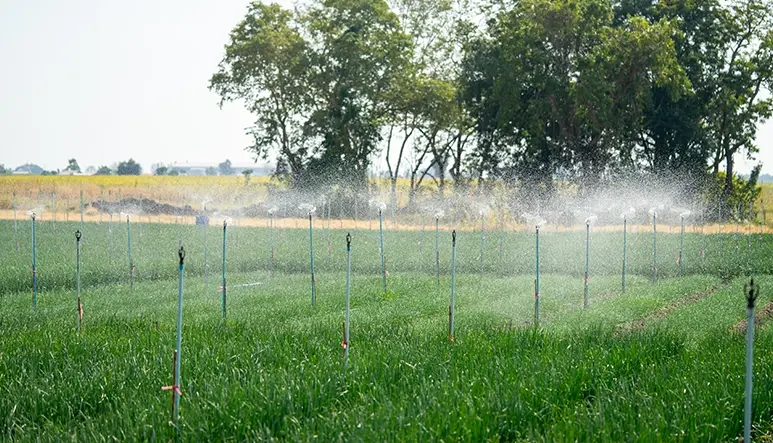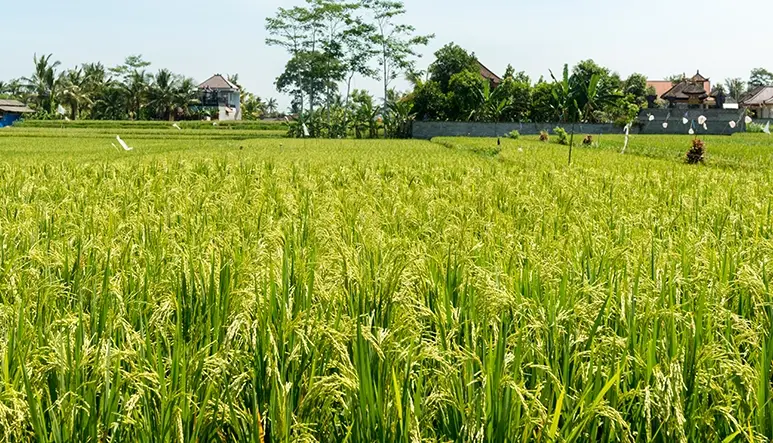Preparing the Soil: Essential Steps for Successful Rice Farming

June 15th, 2023
When it comes to successful rice farming, proper soil preparation plays a crucial role in ensuring optimal growth and yield. The condition of the soil sets the foundation for healthy rice crops, allowing them to absorb essential nutrients and water efficiently. Sponge makes sure to adhere to the best soil practices and believes that it builds the foundation of the quality rice we aim to deliver. In this blog post, our experts have come together to explore the essential steps for preparing the soil for rice farming. By following these steps, farmers can create a favourable environment that promotes robust plant growth, minimises pests and diseases, and ultimately leads to a successful harvest. The first step in preparing the soil for rice farming is to conduct thorough soil testing. This process involves analysing the soil's nutrient content, pH level, and texture. A comprehensive soil test provides valuable information that helps farmers determine the necessary amendments to optimise soil fertility. Key nutrients for rice, such as nitrogen, phosphorus, and potassium, can be precisely applied based on the test results. Rice thrives in wetland conditions, but excess water can hinder growth and lead to disease susceptibility. Effective soil drainage and water management are essential for successful rice farming. Land levelling helps ensure uniform water distribution across the field, preventing waterlogging in some areas while ensuring sufficient water availability in others. Installing proper irrigation systems, such as canals and ditches, facilitates controlled water flow. Soil Aeration and Compaction Prevention A well-aerated soil promotes root development, nutrient absorption, and microbial activity. To enhance soil aeration, farmers can incorporate organic matter, such as compost or well-rotted manure, into the soil. This organic matter improves the soil's structure, allowing for better water infiltration and root penetration. Additionally, avoiding excessive compaction is crucial, as compacted soil restricts root growth and nutrient uptake. Implementing conservation tillage practices, such as minimum tillage or no-till methods, can help prevent soil compaction. Effective weed control is vital in rice farming, as weeds compete with crops for nutrients, water, and sunlight. Before planting rice, farmers should clear the field of weeds, removing them manually or using appropriate herbicides. After weed control, the soil should be prepared for rice planting. This typically involves puddling, a process that saturates the soil with water and creates a favourable environment for rice seed germination and root growth. Puddling helps control weeds, enhances soil fertility, and improves the availability of nutrients to the plants. Proper soil preparation is a fundamental aspect of successful rice farming. By conducting soil testing, ensuring proper drainage and water management, enhancing soil aeration, controlling weeds, and implementing appropriate soil preparation techniques, farmers can create an optimal environment for their rice crops to thrive. Remember that each step is interconnected and contributes to the overall health and productivity of the rice plants. By following these essential steps, farmers can increase their chances of a bountiful harvest while minimising pest and disease risks. Sponge is one of the leading rice producers of our country, making sure that each grain that is sent to places has been rigorously tested. This involves the important step of soil preparation, as that is the core of producing quality rice. Get in touch with our experts to know more!Preparing the Soil: Essential Steps for Successful Rice Farming
Conducting Soil Testing
Soil Drainage and Water Management
Weed Control and Soil Preparation
Conclusion


